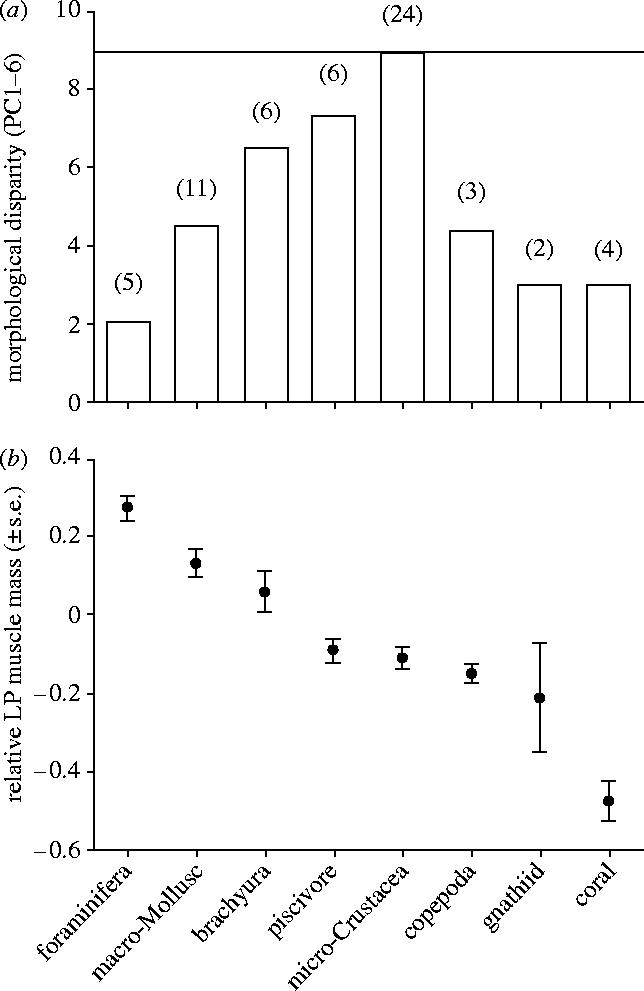Figure 2.

(a) The extent of morphological variation (disparity) within each of the eight feeding groups. The number of species in each group is given in parentheses. The horizontal line indicates the variation in all 95 wrasse species from the Great Barrier Reef. Variation is least in the most specialized feeding groups. (b) The relationship between levator posterior (LP) mass and feeding group in wrasses. The levator posterior is the main crushing muscle of the pharyngeal apparatus. Mass is expressed as the mean residual (±s.e.) of the cube root of the mass (to allow for fish size). Large masses (positive residuals) are associated with hard shelled prey, small masses (negative residuals) with soft prey.
